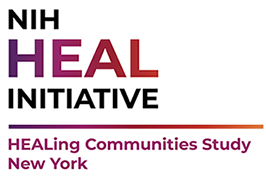Agent-Based Modeling Purpose
In HCS specific study counties, given existing local barriers and facilitators, how much would we have to increase buprenorphine/naltrexone initiation and retention and naloxone availability to reduce opioid overdose deaths by 40%?
Why Use an ABM
Agent-based models (or ABMs) are used throughout epidemiology to predict and forecast, model potential points of intervention and prevention, and assess risks and benefits of different intervention strategies.
Process
Using existing data at the local, state, and national levels from the past decade, we can project rates of opioid overdose death under differing sets of scenarios over the next few years.
Projections
Status Quo - Projections of the status quo are generated given that rates of all parameters remain at baseline (level of last year of data collection). The projected reduction in fatal overdoses compares intervention results to status quo results.
Intervention - Projections of interventions are generated given increases in the three intervention scenarios.
Intervention Scenarios
Projections of interventions are generated given increases in the three intervention scenarios.
Buprenorphine/naltrexone initiation – Increase the number of people receiving prescriptions for buprenorphine or naltrexone, either for the first time or after not using it for 12 weeks. Intervention scenarios range from 50% to 400% increase in initiations from the baseline value of initiations in 2019.
Naloxone availability – Increase the number of naloxone kits distributed by the state or through prescriptions. Intervention scenarios range from 200% to 800% increase in initiations from the baseline value of kits distributed in 2020.
Buprenorphine/naltrexone retention - Increase the percent of people staying on buprenorphine or naltrexone for over six months. The retention intervention looks at a 50% retention increase from the baseline retention value in 2019.
Data Sources
National Survey on Drug Use and Health (NSDUH) – Opioid use, heroin use, opioid use disorder
IQVIA – Buprenorphine/naltrexone initiation and retention; Prescribed naloxone distribution
Healthcare Cost and Utilization Project (HCUP) – Non-fatal opioid overdose
All-Payer Claims – Non-fatal opioid overdose
Vital statistics – Fatal opioid overdose
OASAS – Admissions to OASAS certified facilities, proxy for methadone
OEND – State distributed naloxone
Census – County-level demographics (race/ethnicity, age, sex, income)
